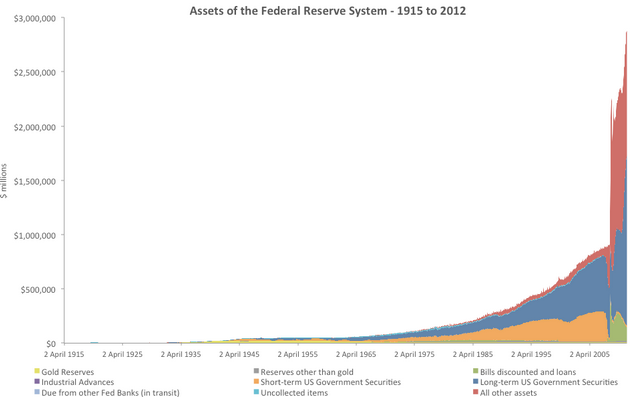” The US economy is creating new wealth and growing employment, albeit at a slow pace. But uncertainty is the key word that describes the economic situation at mid-2013.There are major unknowns with respect to Fed policy, taxing and spending, the effects of the Affordable Care Act on employment, the implementation of Dodd-Frank financial reform, regulatory policy affecting the production of electricity, and the prospects for Europe’s recovery from an extended recession. Add to this pallid picture reductions in growth in China,India, and the developing world taking some of the edge off the global boom, which, in spite of that growth haircut, is still tugging away on America’s export growth.
With the closing of the books on the 2012 economy, real GDP growth registered 2.2 percent. But the current picture suggests we will be lucky to break 2.0 percent in 2013 and a bit more in 2014. This compares with the results of the Federal Reserve Bank of Philadelphia’s Livingston Survey in December 2012, which predicted 2.1 percent growth in 2013’s first half and 2.3 percent in the second half of the year. It will be a while before Livingston speak again, but right now, Economy.com’s dynamic GDP growth meter indicates the economy is expanding at 1.8 percent.
As Goldilocks might put it, “It’s not just right.” Not by a long shot. We can see images of the slowdown in the Institute of Supply Management’s indexes for the manufacturing and non-manufacturing (service) economies shown below. Both indexes are headed south of the border. Recall that 50 is the magic number that coincides with zero growth.”

” Now the bad news. Consider the next chart. It shows in nominal terms the level of federal receipts and expenditures for 1Q 1990 through 4Q 2012. Even with progress being made, there is a yawning gap waiting to be closed.
If the gap is to be closed, there is no doubt but that it will take more revenue and less spending. But when it comes to getting revenue, there is a never ending political debate regarding tax-rate fairness and which taxpayer income group, if any, should pay the higher or lower tax rate. (After all, there could be a flat tax.)There is hardly any discussion of revenues, which seems odd, to say the least.
But of course, there is reason to be concerned about fairness. People understandably rebel when they perceive they are being treated unfairly by government. (Consider the current IRS controversy.) But if revenues are the chief concern, then how much revenue is collected may be an equally important consideration when politicians talk about taxes.
Writing in 1924, treasury secretary Andrew W. Mellon said this about the political manipulation of rates:
I have never viewed taxation as a means of rewarding one class of taxpayers or punishing another. If such a point of view ever controls our public policy, the traditions of freedom, justice and equality of opportunity,which are the distinguishing characteristics of our American civilization, will have disappeared and in their place we shall have class legislation with all its attendant evils. The man who seeks to perpetuate prejudice and class hatred is doing America an ill service.
But why pay attention to the thoughts expressed by Andrew Mellon? Does he have credentials that command attention? Yes, indeed. As Secretary of Treasury during the Harding, Coolidge, and Hoover administrations, Mellon led a successful effort to reduce the size and debt of the federal government. In the earlier part of his government service, the nation was adjusting to a post–World War I environment, with lots of debt overhang. Sound familiar? His arguments about the relative merits of lower tax rates to produce higher revenues won the day. And he saw higher revenues when rates were reduced. He literally discovered the basis of what we now celebrate as the Laffer Curve. In all fairness, we should call it the Mellon-Laffer Curve.”























